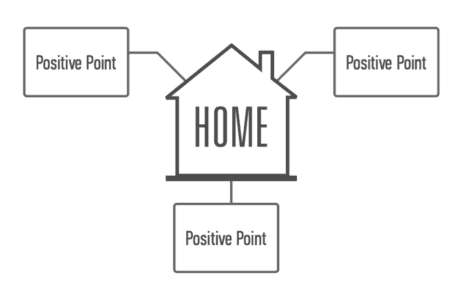
Your message is probably not compelling
Does your audience buy into your message – emotionally?
Do people find your message compelling enough to recall and act on at decision time?
Here’s how to get to yes. Always answer your audience’s first question first, “What’s in it for me?”
Why? Because humans choose what’s in their self-interest. People don’t care about you, your product, or your message. They care most about themselves.
Make your message easy for people to absorb
Spell out clearly the benefit your audience stands to gain. Minimize the effort required to reap the benefits, as communications professor Wilbur Schramm advised.
Speak your audience’s language, so your message is easy to get.
Only about one out of four marketers speaks the language of their audiences and decision-makers, according to a Forrester study, “Customer-Centered Messaging Motivates Buyers to Act.”
In practical terms, that means when you speak to your audience in words that are familiar to them, you leapfrog ahead of three out of four competitors.

Move people emotionally so they remember your message at decision time
“People will forget what you said. People will forget what you did. But people will never forget how you made them feel,” said author Maya Angelou.
At decision time, audiences act on what they remember. They can’t act on what they forgot.
People who hear your message today forget 90% of it in two days, says cognitive neuroscientist and author Dr. Carmen Simon. Does your message move your audience emotionally, so they remember the 10% you want them to?
To boost the emotional impact of your message, use this free tool from the Advanced Marketing Institute. It analyzes the emotional marketing value (EMV) of messages or headlines. When you create a Message Map, test its EMV before you roll it out.
EMV measures emotional content on a scale of 0 to 100. Higher-scoring headlines achieve more sharing on social media.
A CoSchedule study of 100 million headlines found that doubling your EMV score from 18 to 39 leads to a tenfold increase in sharing. Here’s a bar chart of those findings:

It’s not easy to write high-EMV headlines
I wrote dozens of headlines for this blog to find one with an EMV greater than 50.
Here are six headlines from among dozens tested for this blog, with their EMV scores:
- “Make your message clear, concise, consistent, and compelling” scored a zero. Zero means that none of these words hold any emotional impact. Ouch!
- “How to fix your marketing message” scored a 33.
- “Why marketing messages are broken” scored a 40.
- “Maybe your marketing message is not compelling” scored a 43.
- “Why your message is probably not compelling” scored a 71.
- “Your message is probably not compelling” scored an 83.
Now let’s put these EMV scores into context. “Most professional copywriters’ headlines will typically have 30%-40% EMV words in their headlines,” the Advanced Marketing Institute (AMI) says.
Set an EMV threshold that fits your brand. Strive for consistency.
EMV reveals the type of emotional appeal inside your message – either intellectual, spiritual, or empathetic. Choose the one that best fits your audience.
The winning headline for this blog has “a predominantly Empathetic appeal. While not as common as words with Intellectual impact, words which resonate with Empathetic impact often bring out profound and strong positive emotional reactions in people,” AMI says.
“Empathetic impact words are best used to attune people and businesses involved with caregiving. For example, nurses, doctors, and counselors all tend to respond easily and favorably to Empathetic words.
“Women, and especially mothers, are very strong in their use of Empathetic impact words in the language. While the use of Empathetic impact words does not have to be limited to these groups, we’ve found that selecting more words with Empathetic impact delivers desirable conversion responses from those market segments.”
When it fits your audience – such as healthcare professionals, caregivers, counselors, marketers, and moms – speak the language of empathy.

Which appeal – empathetic, intellectual, or spiritual – fits your audience best?
Personally, I lean towards empathetic and spiritual headlines. Why? Because emotional messages spur audiences to action.
“The essential difference between emotion and reason is that emotion leads to action, while reason leads to conclusions,” says neurologist and author Donald B. Caine.
Can you make your message more emotional?
I bet you can!
I hope you’ll try the EMV tool yourself to test the emotional power of your message. It helps make your message even more compelling than before.
Go for emotion! Because emotion creates a compelling message, one that sticks when buyers decide.
Related Posts
Make Your Message Even Simpler
No matter how simple your message is, you can make it even simpler. First, create a draft Message Map. Then apply Occam’s razor: Remove all...
4 ways to help you escape marketing project approval hell
Your assignment: get a project through your company’s approval process. It usually feels like an uphill battle to win approval for a marketing project....
Bring Your Message Home to Audiences
An interview with Tripp Frohlichstein, co-inventor of the Message Map Marketers, what’s your single most important point to communicate? It’s crucial that you get...
Top 100 Content Marketing Question: How do you maximize content with as little effort and time as possible?
5 ideas to help you maximize content 1. Dedicate a person or team to content To maximize content marketing and invest the least money,...





